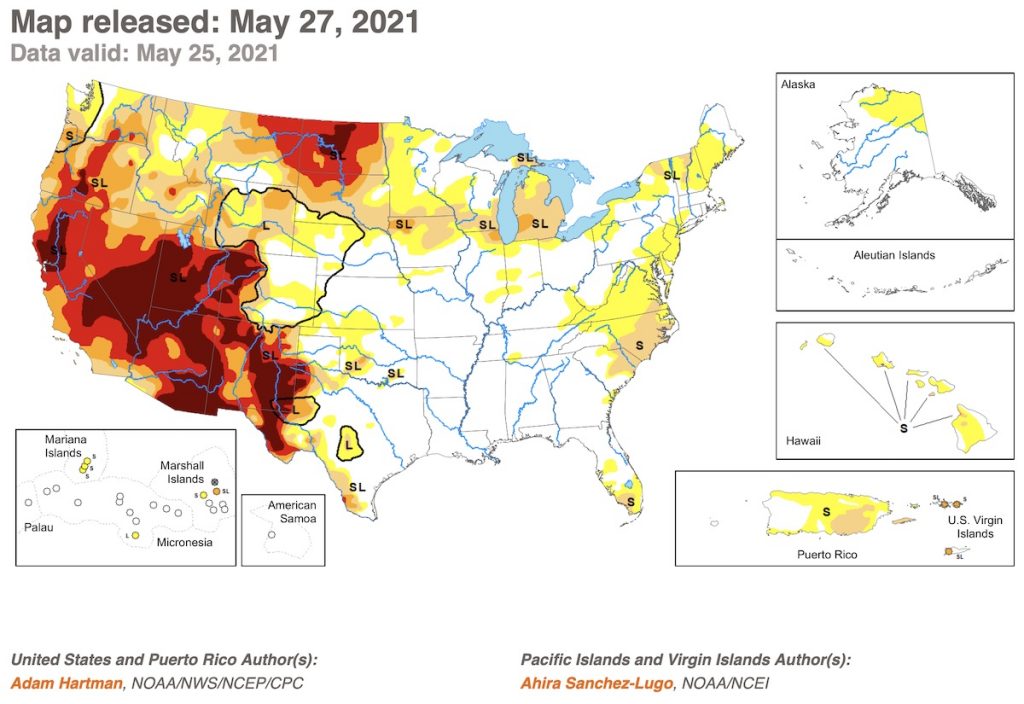We’ve had pretty good planting weather this year. According to the USDA National Agricultural Statistics Service’s latest crop progress and condition report, as of May 30, South Dakota farmers are putting their corn, soybeans, sorghum, and sunflowers in the ground faster than usual:
Corn condition rated 0% very poor, 2% poor, 31% fair, 63% good, and 4% excellent. Corn planted was 98%, near 94% last year, and ahead of 82% for the five-year average. Emerged was 82%, ahead of 68% last year, and well ahead of 57% average.
Soybeans planted was 92%, ahead of 77% last year, and well ahead of 63% average. Emerged was 65%, well ahead of 40% last year and 32% average.
…Sorghum planted was 65%, well ahead of 44% last year and 42% average.
Sunflowers planted was 35%, ahead of 21% last year and 24% average [USDA NASS, “South Dakota Crop Progress and Condition,” 2021.06.01].
But more than half of our cropland is drier than we’d like, and the pastures are looking a bit rough, too:
Topsoil moisture supplies rated 19% very short, 35% short, 45% adequate, and 1% surplus. Subsoil moisture supplies rated 19% very short, 43% short, 37% adequate, and 1% surplus.
Pasture and range conditions rated 6% very poor, 34% poor, 42% fair, 16% good, and 2% excellent [USDA NASS, 2021.06.01].
According to the University of Nebraska–Lincoln Drought Monitor, as of May 25, all but a southwest strip and a northeast blob of South Dakota were in moderate or worse drought. We are part of a band of dry conditions stretching east along the Minnesota–Iowa border into Wisconsin and Michigan. North Dakota is even drier. Most of the country from the Rockies west is in drought.

By last week’s numbers, 27% of Americans live in drought areas. The percentage of South Dakotans in drought areas is 70%.
Kristi, should bring in rainmaker trump, he could do it. Better bring him in on a forecast rain day, you never know.
Well…we have droughts, serious droughts every 15 to twenty years and they last multiple growing seasons…1890-95, 1910 -1915, 1928-38, the mid to late 50’s, 75-78, the mid 90’s etc. Some are worse than others, but west of the 100th meridian we are subject to desert like conditions. East of the 100th, drought is generally less widespread but the James River Valley was devastated in the thirties and the drought in the 70’s left nothing alive. Not much we can do about it. Jedediah Smith and his expedition nearly died of thirst crossing what is now South Dakota in the 1820’s.